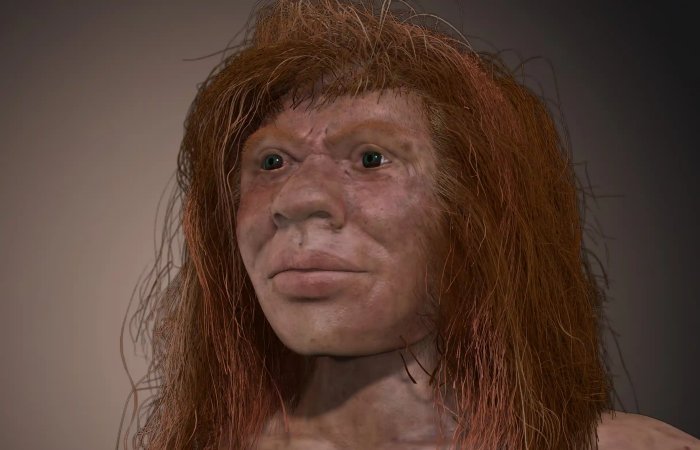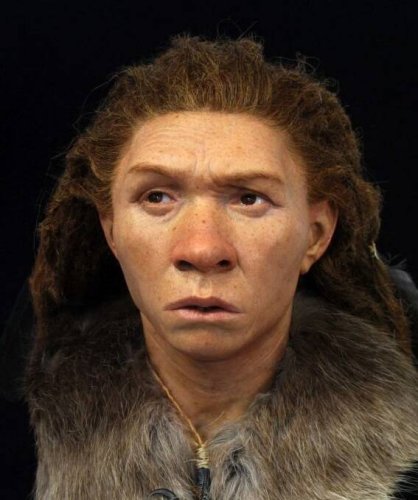Mysterious Denny – 90,000-Year-Old Child Whose Parents Were Two Different Human Species
Jan Bartek - AncientPages.com - About 90,000 years ago, an interesting child walked the Earth. This individual was a young human hybrid. Nicknamed Denny by scientists, the ancient girl is the only known individual whose parents were from two different human species!
The bones of the Denny were discovered in 2018 when scientists investigated the Denisova Cave in the Altai mountains of southern Siberia.
Artist’s reconstruction of the teenage Denisovan. Credit: John Bavaro/early-man.com
Scientists did not have many of her remains, only a bone and teeth, but they were able to determine who she was.
FINDER, Fossil Fingerprinting and Identification of New Denisovan Remains is a recent project that has been deliberately started to shed light on the Denisovans and their relations with Homo sapiens and the Neanderthals. Scientists know all three species interbred, but the goal of the study s to understand more about the complex bonding between the species.
"We aim to find out where they lived, when they came into contact with modern humans – and why they went extinct," project leader Katerina Douka, of the Max Planck Institute in Jena, Germany and a visitor at Oxford University said.
Researching the story of the Denisovans is challenging because the only place where we have found their remains is the Denisovan Cave in Siberia, and only a handful of fossils have ever been dug up there, along with several Neanderthal pieces.
"It is a wonderful site," says Tom Higham, deputy director of Oxford University's Radiocarbon Accelerator Unit and an adviser to Finder. "It is cool inside, so DNA in bones does not disintegrate too badly. However, nearly all the bones there have been chewed up by hyenas and other carnivores." As a result, Denisova's cave floor is littered with tiny, unidentifiable bone fragments.
"You cannot tell whether a piece comes from a mammoth or a sheep – or a man or woman," adds Higham. "Only a very few will be human, though they are certainly worth finding – they could tell us so much."
Scientists performed DNA sequencing on the ancient girl's bones and discovered she had parents from two different species. Denny's mother was a Neanderthal, and her father was a Denisovan. Denny lived in the cave with several individuals, both the Neanderthals and the Denisovans, and she was only a young teenager at the time of her death.
"Neanderthals and Denisovans are extinct groups of hominins that separated from each other more than 390,000 years ago.
Denisova Cave. Credit: Wikipedia - CC BY-SA 4.0
The genome of 'Denisova 11', a bone fragment from Denisova Cave (Russia) 3 comes "from an individual who had a Neanderthal mother and a Denisovan father. The father, whose genome bears traces of Neanderthal ancestry, came from a population related to a later Denisovan found in the cave. The mother came from a population more closely related to Neanderthals who lived later in Europe than to an earlier Neanderthal found in Denisova Cave, suggesting that migrations of Neanderthals between eastern and western Eurasia occurred sometime after 120,000 years ago.
The finding of a first-generation Neanderthal–Denisovan offspring among the small number of archaic specimens sequenced to date suggests that mixing between Late Pleistocene hominin groups was common when they met," the scientists write in their study published in Nature. 1
Some may think Denny's remarkable ancestry suggests that Neanderthals and Denisovans must have mated with each other regularly, but scientists warn against jumping to conclusions.
"The DNA of Neanderthals and Denisovans are distinct. We can easily tell them apart. That argues against frequent interbreeding. Otherwise they would have ended up with the same DNA," Douka says.
Previous studies have offered evidence Denisovans, and modern humans interbred, but why at Denisova?
"One suggestion is that the cave represents a border outpost for both species, one that was situated at the very eastern edge of the range of the Neanderthals, who were primarily a European species, and at the very western tip of the homelands of the Denisovans, who were an eastern species. Occasionally members from both groups would have reached the cave at the same time – with amorous consequences.
It is an idea borne out by detailed studies of Denny's Neanderthal mother. Her genes show a particularly close affinity with Neanderthals who lived in Croatia, suggesting that the immediate predecessors of Denny's mother may have been part of a group who slowly migrated east from Europe towards Denisova – where she encountered Denny's father at the outer edges of each other's homelands.
A modern reconstruction of a Neanderthal woman. Credit: Royal Pavilion & Museums; Brighton & Hove
It is an intriguing picture, though much more information is required to confirm it. Scientists have no direct evidence that the Denisovans' homeland range was primarily to the east of the cave, although the fact that their genes have been detected in the DNA of populations in Australia, New Guinea and other parts of Oceania, provides support for this idea and suggests future searches for sites should be focused on eastern Russia, China and south-east Asia." 2
The Denisovans are an extinct human species that scientists possess little information about. Only recently were experts able to construct the first facial reconstruction that reveals what Denisovans may have looked like.
According to Higham, there are many unanswered questions scientists are facing. For example, what was the Denisovans' distribution? What is the earliest evidence for their emergence from the common ancestor they shared with Neanderthals 500,000 years ago?
Scientists would benefit if they could find a bone or two from other sites, but it may take a while before it happens.
Updated on December 14, 2023
Written by Jan Bartek - AncientPages.com Staff Writer
Copyright © AncientPages.com All rights reserved. This material may not be published, broadcast, rewritten or redistributed in whole or part without the express written permission of AncientPages.com
Expand for references- V Slon et al., The genome of the offspring of a Neanderthal mother and a Denisovan father, Nature, 561(7721), pp.113–116, Sep 2018. doi: https://doi.org/10.1038/s41586-018-0455-x.
- Robin McKie - Meet Denny, the ancient mixed-heritage mystery girl, The Guardian
More From Ancient Pages
-
 Who Made The Mysterious Ancient Cave Paintings And Inscriptions In Oklahoma 2,500 Years Ago?
Featured Stories | Jul 23, 2024
Who Made The Mysterious Ancient Cave Paintings And Inscriptions In Oklahoma 2,500 Years Ago?
Featured Stories | Jul 23, 2024 -
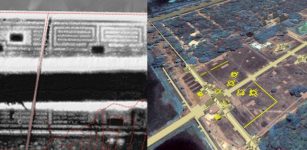 Mysterious Ancient Spiral Structure And Buried Towers Discovered At Angkor Wat
Archaeology | Dec 9, 2015
Mysterious Ancient Spiral Structure And Buried Towers Discovered At Angkor Wat
Archaeology | Dec 9, 2015 -
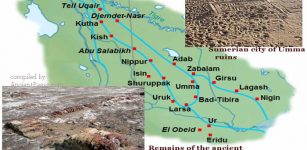 Infamous End Of Lugalzagesi – Ambitious King Who United Sumer
Featured Stories | Apr 30, 2020
Infamous End Of Lugalzagesi – Ambitious King Who United Sumer
Featured Stories | Apr 30, 2020 -
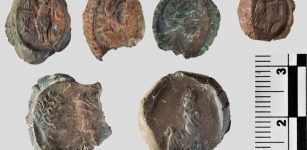 1,000 Ancient Sealings Linked To Graeco-Roman Pantheon Among Finds In Unidentified Church In Turkey
Archaeology | Dec 12, 2017
1,000 Ancient Sealings Linked To Graeco-Roman Pantheon Among Finds In Unidentified Church In Turkey
Archaeology | Dec 12, 2017 -
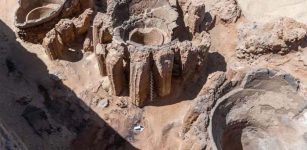 World’s Oldest Beer Factory Discovered In Abydos, Egypt
Archaeology | Feb 16, 2021
World’s Oldest Beer Factory Discovered In Abydos, Egypt
Archaeology | Feb 16, 2021 -
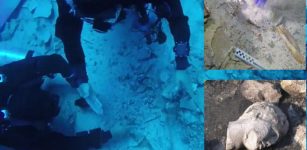 Huge Ancient Underwater Structure And Stunning Artifacts Discovered Off The Coast Of Salamis
Archaeology | Jun 26, 2019
Huge Ancient Underwater Structure And Stunning Artifacts Discovered Off The Coast Of Salamis
Archaeology | Jun 26, 2019 -
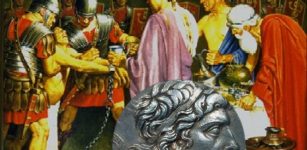 King Mithradates VI Of Pontus Used Poison To Avoid Death By Poison
Ancient History Facts | Mar 5, 2016
King Mithradates VI Of Pontus Used Poison To Avoid Death By Poison
Ancient History Facts | Mar 5, 2016 -
 16 Dead Sea Scrolls Fragments Are Forgeries – U.S. Bible Museum Says
Artifacts | Mar 15, 2020
16 Dead Sea Scrolls Fragments Are Forgeries – U.S. Bible Museum Says
Artifacts | Mar 15, 2020 -
 Roman Consuls Seized Power Through Intimidation, Bribery And Show Business
Ancient History Facts | Mar 4, 2025
Roman Consuls Seized Power Through Intimidation, Bribery And Show Business
Ancient History Facts | Mar 4, 2025 -
 Mysterious Artifacts Scattered Around Mount Baigong, China
News | Jun 23, 2014
Mysterious Artifacts Scattered Around Mount Baigong, China
News | Jun 23, 2014 -
 Unexplained Ancient Encounters With Shining Beings Who Appeared Out Nowhere – Who Were They?
Featured Stories | Dec 15, 2024
Unexplained Ancient Encounters With Shining Beings Who Appeared Out Nowhere – Who Were They?
Featured Stories | Dec 15, 2024 -
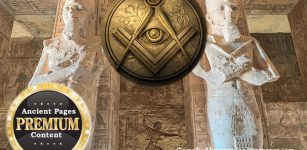 Secret Hidden Freemasonic Messages Concealed In Ancient Egyptian Artifacts And Roman Works – A Misunderstood Object? – Part 1
Ancient Mysteries | Feb 18, 2022
Secret Hidden Freemasonic Messages Concealed In Ancient Egyptian Artifacts And Roman Works – A Misunderstood Object? – Part 1
Ancient Mysteries | Feb 18, 2022 -
 On This Day In History: Storming Of The Paris Fortress – Prison Bastille – On July 14, 1789
News | Jul 14, 2016
On This Day In History: Storming Of The Paris Fortress – Prison Bastille – On July 14, 1789
News | Jul 14, 2016 -
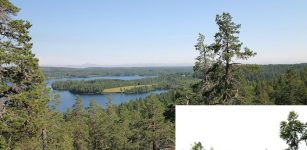 Spir Mountain Cairns: Prehistoric Ancient Monuments To The Dead In Northern Sweden
Featured Stories | Jan 12, 2022
Spir Mountain Cairns: Prehistoric Ancient Monuments To The Dead In Northern Sweden
Featured Stories | Jan 12, 2022 -
 What Is A Mural Of Tepoztēcatl, Aztec Rabbit God Of Alcohol Doing In A Mexican Church?
Archaeology | Oct 15, 2022
What Is A Mural Of Tepoztēcatl, Aztec Rabbit God Of Alcohol Doing In A Mexican Church?
Archaeology | Oct 15, 2022 -
 Researchers Find An Elusive European Ancestor Of Lager Yeast In Ireland
Archaeology | Dec 14, 2022
Researchers Find An Elusive European Ancestor Of Lager Yeast In Ireland
Archaeology | Dec 14, 2022 -
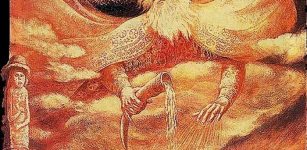 Secrets Of The ‘Worlds Of Prav, Nav And Yav’ Revealed – Ancient Slavic Wisdom Confirms The Multiverse Theory
Featured Stories | Oct 6, 2015
Secrets Of The ‘Worlds Of Prav, Nav And Yav’ Revealed – Ancient Slavic Wisdom Confirms The Multiverse Theory
Featured Stories | Oct 6, 2015 -
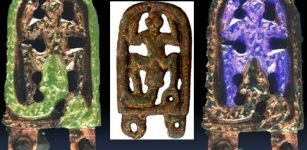 Unique Medieval Bronze Buckle Of A Snake Devouring A Frog-Like Creature Found In Brno, Czech Republic
Archaeology | Dec 13, 2023
Unique Medieval Bronze Buckle Of A Snake Devouring A Frog-Like Creature Found In Brno, Czech Republic
Archaeology | Dec 13, 2023 -
 Birka Artifacts Shed Light On Vikings’ Daily Life
Artifacts | Jun 24, 2019
Birka Artifacts Shed Light On Vikings’ Daily Life
Artifacts | Jun 24, 2019 -
 Terrifying Buggane: Demonic And Tyrannical Celtic Demon That Hated Churches And Set Them On Fire
Celtic Mythology | Jul 14, 2017
Terrifying Buggane: Demonic And Tyrannical Celtic Demon That Hated Churches And Set Them On Fire
Celtic Mythology | Jul 14, 2017

